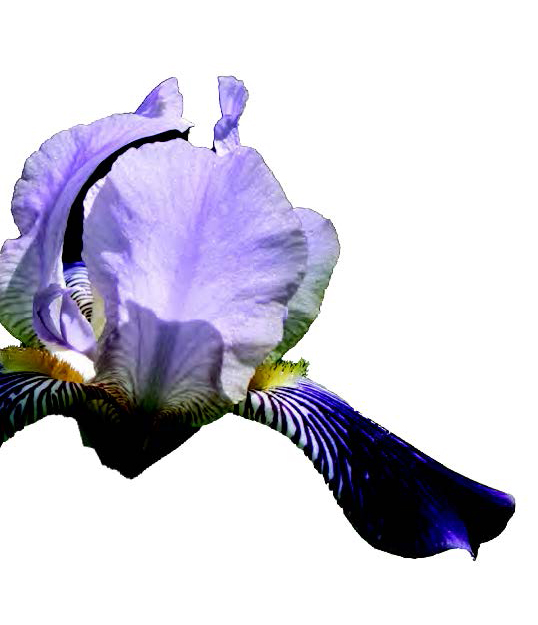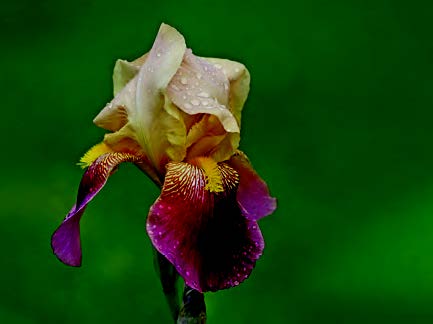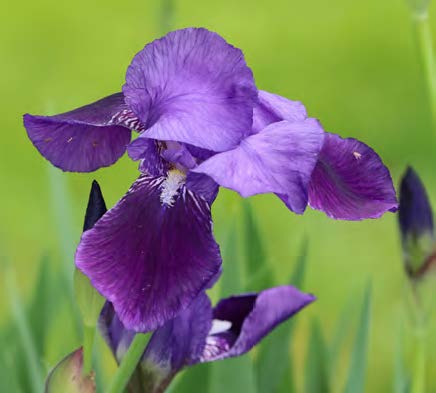
A lone iris blooms in a hillside flower bed near the writer’s Parke County cabin. The petals of the irises are called “falls.”

Raindrops drip from a bloomed iris in the writer’s yard in early May.

A dark purple iris, the most common color, shows off its “beard,” the soft white and yellow “caterpillar” that provides a hold for pollinators to grab.
Like most country people, we have a spot along our woods that serves us well. It is both a compost heap and leaf pile, a place where we toss rakings and trimmings and lifeless vegetables. It is regularly inspected by possums, birds, and earthworms, where nothing man-made spoils its organic richness.
Despite no planning, I often find irises sprouting there among the stems and wilt and rotting carcasses of the frost-bitten and seasonally worn, for as I clean old flower beds or thin the garden, I fill my wheelbarrow and empty it at that spot.
I planted irises when we moved to our property over 40 years ago. In those days, we had a threadbare and flowerless yard with little character, and since I was the son of a mother who couldn’t live without color around her house and who had plenty of starts to spare, I brought irises home from her garden and gave them prominence in mine.
Irises have a fascinating history. They have been cultivated for centuries, with the ancient Egyptians and Greeks writing their earliest botanical chapters. Their name is derived from the Greek word for “rainbow,” an apt appellation since irises come in a variety of colors. Today, it is said that there are about 250 kinds — some growing wild — and although most of what I have are various shades of purple and yellow, one can find them in pink and blue, burgundy and white, and even black.
Some irises bloom in both spring and fall. Many have double or triple the number of “beards” than others; some have tiny, nearly reed-like blades. One native variety — called “blue flag” — grows wild in a ditch not a half-mile from my house.
It is said that purple irises, the most common color, were placed on the graves of Greek women to summon Iris, the Goddess of the Rainbow, so she could help the departed find their way to the afterlife. Irises do, indeed, have a sort of eternal quality, for their oils can be used for their antioxidant and anti-inflammatory goodness, as well as in perfumes and cosmetics.
Irises have been found included in drawings discovered in the archeological digs of Egypt, and, centuries later, the Bourbon kings of France adopted its shape in the fleur-de-lis. I recently came across a portrait of Queen Elizabeth I of England, painted around 1559, in which she is wearing a dress adorned with irises.
Less than a month ago, I drove to my son’s place and, like his old man, he is a bit obsessed with a neat yard. With great effort, he built his own flower beds out of old railroad ties and stones. As I stepped out of my truck, I saw the pale green tips of irises poking their heads above the leaf litter he had left in place and was planning to soon rake away.
In just a few days, a stand of purple and white irises, a new generation, will be in bloom.
Mike Lunsford is a freelance columnist, feature writer, and photographer, primarily for the Terre Haute Tribune-Star and Terre Haute Living magazine. The author of seven books lives in Parke County with his wife, Joanie. Contact Lunsford at hickory913@gmail.com.



